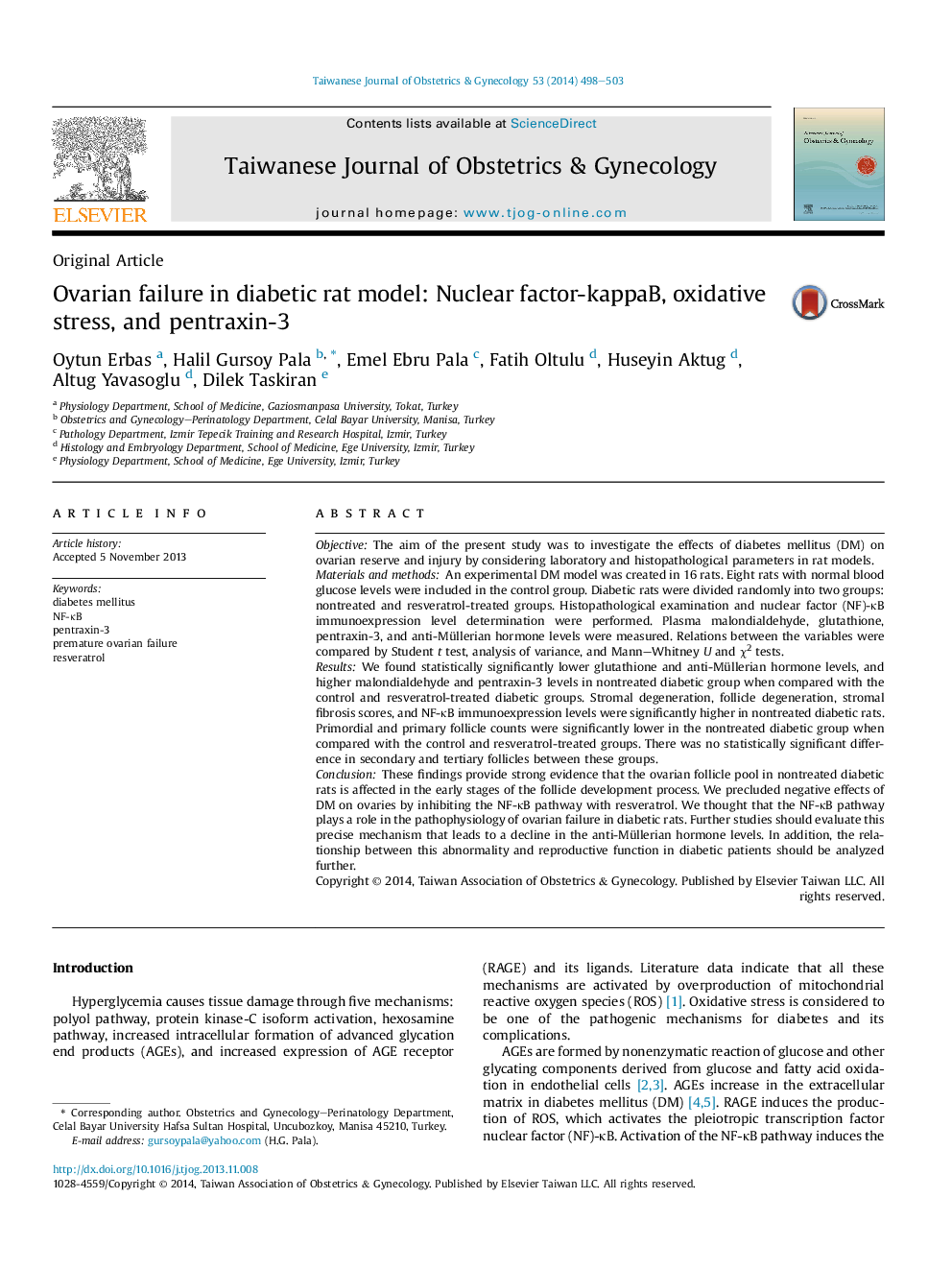| Article ID | Journal | Published Year | Pages | File Type |
|---|---|---|---|---|
| 3974946 | Taiwanese Journal of Obstetrics and Gynecology | 2014 | 6 Pages |
ObjectiveThe aim of the present study was to investigate the effects of diabetes mellitus (DM) on ovarian reserve and injury by considering laboratory and histopathological parameters in rat models.Materials and methodsAn experimental DM model was created in 16 rats. Eight rats with normal blood glucose levels were included in the control group. Diabetic rats were divided randomly into two groups: nontreated and resveratrol-treated groups. Histopathological examination and nuclear factor (NF)-κB immunoexpression level determination were performed. Plasma malondialdehyde, glutathione, pentraxin-3, and anti-Müllerian hormone levels were measured. Relations between the variables were compared by Student t test, analysis of variance, and Mann–Whitney U and χ2 tests.ResultsWe found statistically significantly lower glutathione and anti-Müllerian hormone levels, and higher malondialdehyde and pentraxin-3 levels in nontreated diabetic group when compared with the control and resveratrol-treated diabetic groups. Stromal degeneration, follicle degeneration, stromal fibrosis scores, and NF-κB immunoexpression levels were significantly higher in nontreated diabetic rats. Primordial and primary follicle counts were significantly lower in the nontreated diabetic group when compared with the control and resveratrol-treated groups. There was no statistically significant difference in secondary and tertiary follicles between these groups.ConclusionThese findings provide strong evidence that the ovarian follicle pool in nontreated diabetic rats is affected in the early stages of the follicle development process. We precluded negative effects of DM on ovaries by inhibiting the NF-κB pathway with resveratrol. We thought that the NF-κB pathway plays a role in the pathophysiology of ovarian failure in diabetic rats. Further studies should evaluate this precise mechanism that leads to a decline in the anti-Müllerian hormone levels. In addition, the relationship between this abnormality and reproductive function in diabetic patients should be analyzed further.
